
Toronto Painters, Brian Young, founder and owner of Home Painters Toronto, a leading Toronto Painting Company, find it timely to educate people about the effects of the winter season and the potential incremental Toronto weather effects to house paint. Recent news of winter storms hitting several areas in Ontario, including Toronto and the GTA, prompted professional Toronto painters to know how the current season and weather changes can cause problems to everyone’s home, plus possible solutions.
Brian Young stated: “It’s no secret that extreme winter storms can cause damage to Toronto properties.” However, even regular winter storms can harm homes, particularly their exterior and interior paint. We want to educate everyone about the lurking damages caused by the storms and winter season.”
Toronto Painters: “There are certain practical steps that you can take to protect your home from winter weather”
How Can I Protect my House in the Winter?
It’s critical to know the winter storm warning signs. The most important thing you can do when you spot a storm is to act quickly and protect your home.
There are a lot of ways to protect your house from harsh elements during the winter season. The best option is to hire a professional for snow removal services. This way, you will be sure that no ice or snow will accumulate on your property. However, if you can’t afford it, there are other things that you can do.
The following are some tips on how to protect your exterior house finishes in the winter season:
- The first thing to do is to seal the house. Sealing will help protect your exterior from damage because it keeps moisture out and reduces the chances of mould growth.
- You should also use ice melt on pathways and walkways so that you don’t end up with slippery surfaces. To avoid ice dams, you can drill holes through your roof’s shingles and flashings in order for water to drain down safely.
- You may also apply paint with a high gloss finish to avoid ice formation on surfaces such as windows and doors.
- One of the best ways to protect the exterior house in winter is by installing storm windows. They are made with double panes and have a thin air space between them, which helps in insulating heat retention. Storm windows also block out most of the wind and moisture when closed.
- If you have a garage or shed on your property, make sure to cover it with a tarp or some other type of covering. This will help protect your belongings from getting damaged by snow and ice during the winter months.
- If your home is located in a windy area, make sure to trim back any branches that may be hanging over the roof. This will help prevent trees from falling on your house during storms or high winds.
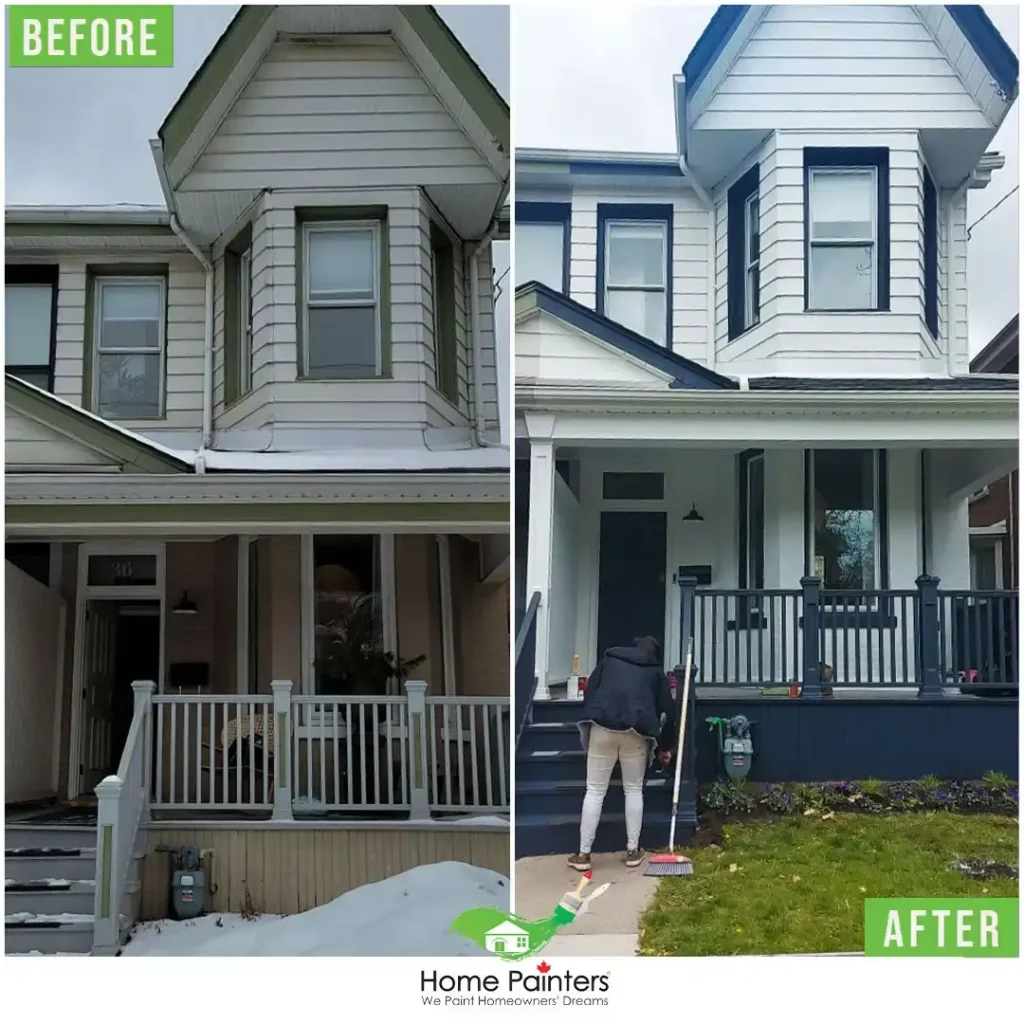
Active arch nemesis
According to the Toronto painters, winter storms and the winter season bring two active nemeses—moisture, extreme temperature changes, and water leaking—to damage the interior and exterior of home finishes in Toronto. It starts on the exterior. Moisture accumulation occurs with the surface’s exposure to rain or water after the ice melted on it. Excessive exposure to moisture can lead to paint blistering, peeling, and potential interior water damage; which affects the property’s overall appeal and can diminish its value as well.
This case is also the same in temperature fluctuations. Winter season is the time for ice formation on different parts of the house. The problem is, there are days when the temperature may rise and result in melting and increase the moisture around the property, which will lead to the aforementioned problem. Imagine how much abuse the exterior house finishes with the regular freezing and melting during this time of the year.
How long does it take for paint to dry on a house? It depends on the paint that you are going to use. Oil-based paint will dry within 6–8 hours and be ready to recoat in 24 hours. Latex paint will dry within an hour, and you can safely recoat in 4 hours.
How long does it take for exterior paint to dry on a house? In exterior latex paint, it usually takes between four and eight hours to dry fully. It is a good idea to allow for at least twelve hours of drying time before the rain starts. If you can allow the paint to dry 24 hours before it rains, that is best
Winter storms effects exterior painting
Extreme temperature fluctuations can cause damage to the paint on the exterior of your home. It will chip, crack, and it can even make it peel right off. As the wood or other materials under exterior paint expand and contract, the bond between the paint and painted surfaces weakens. Paint — especially lower-quality exterior paints used by disreputable painting companies — can crack, flake off, or bubble under the stress of rapid, intense temperature fluctuations.
When exterior paint is chipped, peeled, or cracked, moisture in the form of cold rain, ice, and snow can get in between the paint in your home, even through the tiniest cracks, and add to the damage that is already there.
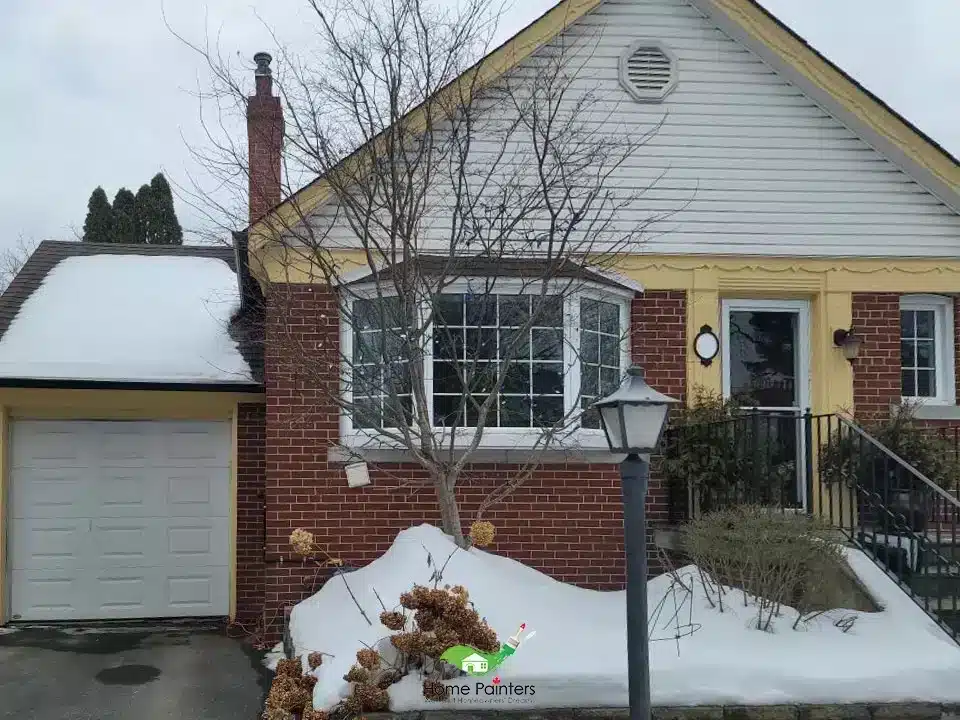
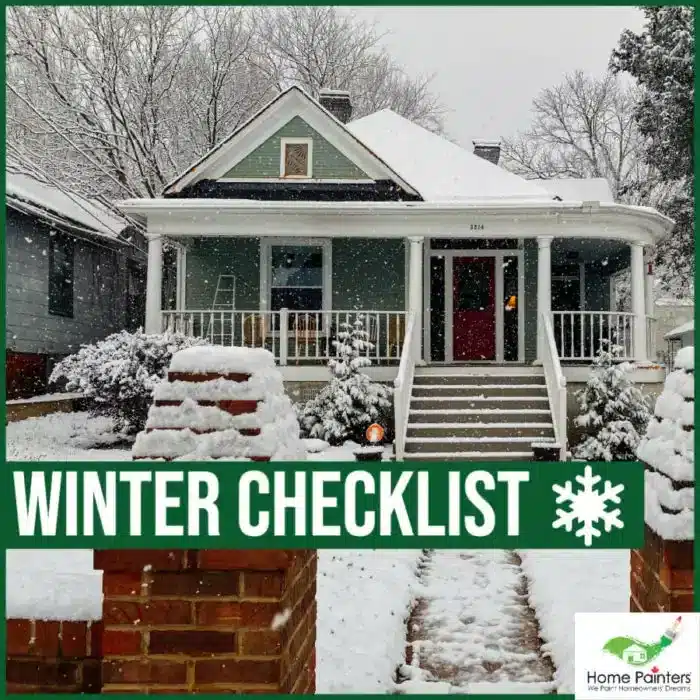
Damages from outside in
In hindsight, people think that winter storms in Toronto only damage the exterior of the house. Nevertheless, Toronto Painters believe that it can also affect interior paint and finishes. Moisture absorbed on the exterior surface, particularly the windows and door frames, can seep inside the house and damage interior wall paint and floors potentially.
It will also blister, crack and peel, which means doubled problems for property owners. Furthermore, the potential for mould and mildew is much greater once moisture and water can penetrate the exterior of the house.
The bottom line is the winter season affects both the home’s interior and exterior finishes. This makes it even more crucial to have these areas fixed and repaired in order to protect and maintain your most prized investment.
What this means to you
Aside from drastically affecting the appearance, blistering and peeling finishes also mean additional expenses for homeowners in Toronto and the GTA, on top of effort. As prized investments, property owners would want to repaint, caulk, and restore their original look and protect their property and investment.
If you are a “yourselfer”, completing the job on your own means time spent and effort exerted. This includes removing the old paint, re-caulking all potential leaking areas, then completely re-applying the new paint finish.
Be forewarned, if the homeowner’s expertise isn’t in house painting and caulking, attempting to repair these areas can be useless if not done properly. Hence, resulting in even more damage and further diminishing the value of the house in Toronto.
To make matters worse, since you are repairing the exterior of your house, the potential of falling from a ladder is also present.
Toronto Painters’ recommendation
Prevention is always better than cure and this is something home Painting Contractors strongly believe.
Before the fall or winter season arrives, a property owner can apply caulking sealant and waterproof the exterior finishes. Doing so will prevent moisture and temperature changes from directly damaging the interior and exterior paint.
For wood surfaces such as garage doors, frames, windows, wood siding, soffits etc, a fresh coat of paint will also insulate and protect the home exterior areas, preventing rotting and wood damage.
Another important reminder is to use the right paint. The goal is to use paint and caulking that can expand and contract whenever temperature changes; and at times there’s a substantial amount of moisture. Using top-quality products (such as Benjamin Moore, Dulux and Behr), will help your caulking and home paint job withstand the harsh season and winter storms.
These painting tips are not only applicable to Toronto residential properties. Business establishments looking for exterior commercial painting services in Toronto can also take advantage of these tips to ensure lasting benefits for their businesses.
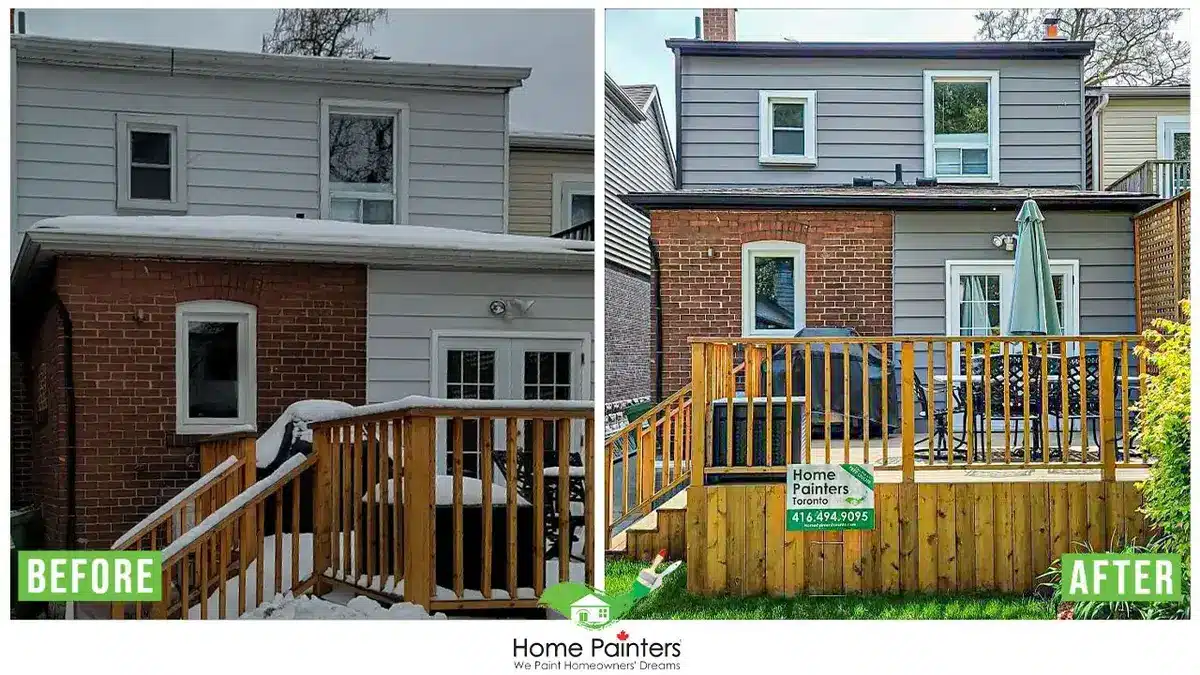
Best paint for exterior walls
The right exterior paint will refresh the look of your home while protecting it from the elements.
Here is the best paint for the exterior walls
• BEHR Premium Plus Ultra Pure White Exterior Paint and Primer in One
• Best Budget: Diamond Brite Oil Base Enamel Interior/Exterior Paint
• Best for Porch and Patio: Kilz Interior/Exterior Enamel Porch & Patio Latex Floor Paint
• Best for Brick: ROMABIO Bianco White Limewash Interior/Exterior Paint
• Best for Wood: Valspar Duramax Satin Exterior Tintable Paint
• Best Color Selection: Farrow & Ball Exterior Eggshell Paint
• Best for Front Door: Modern Masters 275266 Front Door Paint
Painting Over old Exterior Paint
It shouldn’t be challenging when painting over an old exterior paint again, considering that the surface has been painted already once, and you may want to prep and prime.
Here’s how you paint any wall:
- Wash the walls free of dust and grease.
- Fill the cracks, gaps, and holes with fillers, preferably a flexible filler.
- In case you are filling, make sure you sand and apply a primer to prevent a patchy look.
- Apply at least two coats of the new paint.
- If you are going for a lighter colour, paint a basic white matte emulsion as the first coat to prevent the former colour from showing through.
Should I prime over old exterior paint? Yes, you can since priming helps seal and achieve a smooth surface for better adhesion. But is it necessary to use a primer every time you paint?
No, you may not need a primer, if the new paint is the same colour as the old one and the wall is smooth and clean. Both the paint, the old and new, should be of the same type, i.e., oil-based.
The walls are the same colour or at least close to each other.
You need a primer:
You are covering latex paint with oil-based paint. Oil paints will not adhere to latex paints. If your wall is in bad condition and you are looking to cover it up, a primer will help to mask them to a large extent. If the new coat of paint is shades lighter than the darker existing paint.
How to prep exterior trim for painting
Preparing Exterior Trim for Painting
• Start by scrubbing off all dirt and chalking paint with a scrub brush and a solution of trisodium phosphate (TSP). Rinse the trim thoroughly, and allow it to dry completely before preparing the surface for primer and paint.
How much does paint colour affect house temperature? The exterior colour of our house may have more of an impact on the temperature inside than you think. There is no set percentage or amount of this effect, though, because paint colour isn’t the only consideration when it comes to your home’s interior temperature. How much of the exterior of your home impacts the temperature inside will depend on a handful of factors, including:
- The roof color and whether it’s also light or dark
- How much of your home is light or dark
- The amount, size and quality of windows you have
- How much sunlight or shade your house is in
- Your indoor heating and cooling solutions
- The material throughout your home’s exterior
So does the colour of your house affect the temperature inside? Yes, but it isn’t the only factor. Changing the colour of your home’s exterior, however, is a great place to start if you want to keep your home cooler or warmer. You just have to know which colour to choose.
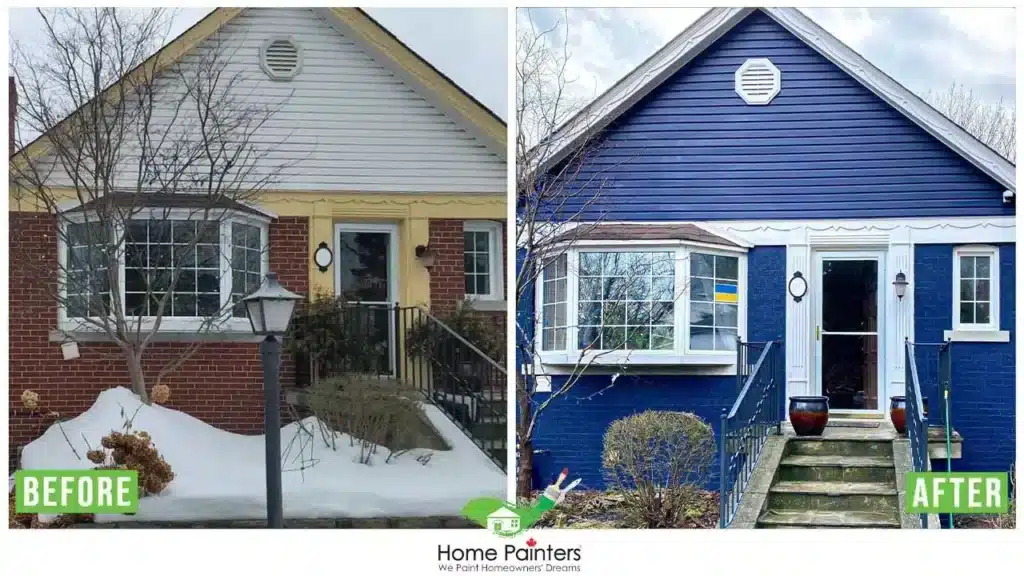
Sounds like a lot of things to do? It can be
But winterizing your house by professional Toronto Painters to combat the costs of frigid winters in Canada can help you save money, keep you warm, keep the water outside where it belongs, and have a more peaceful problem-free home all year around.
Advantages of Painting your Home During Winter Time
More Interesting Blogs Related to
“Winter Storm’s Effects on Your Home”
If you’re thinking of doing some home exterior painting but don’t want to do the work yourself, let our exterior painters help! Even if you are undecided, professional house painters can help you with any problems or questions you may have.
If the work involved sounds like it involves too much time and energy to do yourself, call 416.494.9095 or email brian@HomePaintersToronto.com for a FREE quote. And don’t forget to follow us on all our social channels below as well!





